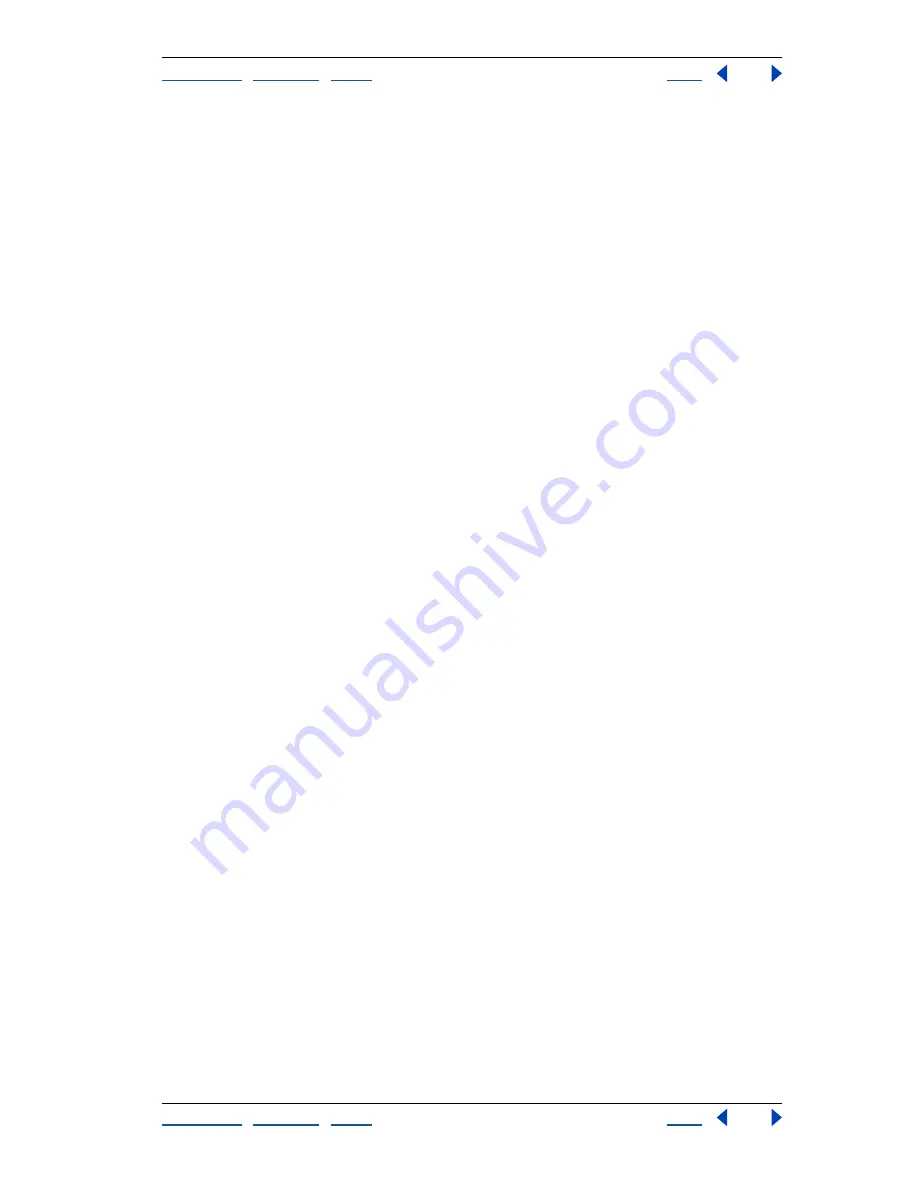
Using Help
|
Contents
|
Index
Back
328
Adobe Photoshop Help
Applying Filters for Special Effects
Using Help
|
Contents
|
Index
Back
328
Gaussian Blur
Quickly blurs a selection by an adjustable amount. Gaussian refers to the
bell-shaped curve that is generated when Adobe Photo-shop applies a weighted average
to the pixels. The Gaussian Blur filter adds low-frequency detail and can produce a hazy
effect.
Motion Blur (Photoshop)
Blurs in a particular direction (from –360º to +360º) and at a
specific intensity (from 1 to 999). The filter’s effect is analogous to taking a picture of a
moving object with a fixed exposure time.
Radial Blur
Simulates the blur of a zooming or rotating camera to produce a soft blur.
Choose Spin, to blur along concentric circular lines, and then specify a degree of rotation;
or Zoom, to blur along radial lines, as if zooming in or out of the image, and specify an
amount from 1 to 100. Blur quality ranges from Draft for the fastest but grainy results;
or Good and Best for smoother results, which are indistinguishable except on a large
selection. Specify the origin of the blur by dragging the pattern in the Blur Center box.
Smart Blur
Precisely blurs an image. You can specify a radius, to determine how far the
filter searches for dissimilar pixels to blur; a threshold, to determine how different the
pixels’ values should be before they are eliminated; and a blur quality. You also can set a
mode for the entire selection (Normal), or for the edges of color transitions (Edge Only and
Overlay). Where significant contrast occurs, Edge Only applies black-and-white edges, and
Overlay Edge applies white.
Brush Stroke filters
Like the Artistic filters, the Brush Stroke filters give a painterly or fine-arts look using
different brush and ink stroke effects. Some of the filters add grain, paint, noise, edge
detail, or texture to an image for a pointillist effect.
Accented Edges
Accentuates the edges of an image. When the edge brightness control
is set to a high value, the accents resemble white chalk; when set to a low value, the
accents resemble black ink.
Angled Strokes
Repaints an image using diagonal strokes. The lighter areas of the image
are painted in strokes going in one direction, while the darker areas are painted in strokes
going the opposite direction.
Crosshatch
Preserves the details and features of the original image while adding texture
and roughening the edges of the colored areas in the image with simulated pencil
hatching. The Strength option controls the number of hatching passes, from 1 to 3.
Dark Strokes
Paints dark areas of an image closer to black with short, tight strokes, and
paints lighter areas of the image with long, white strokes.
Ink Outlines
Redraws an image with fine narrow lines over the original details, in
pen-and-ink style.
Spatter
Replicates the effect of a spatter airbrush. Increasing the options simplifies the
overall effect.
Sprayed Strokes
Repaints an image, using its dominant colors with angled, sprayed
strokes of color.
Sumi-e
Paints an image in Japanese style, as if with a wet brush full of black ink on rice
paper. The effect is soft blurry edges with rich blacks.






























